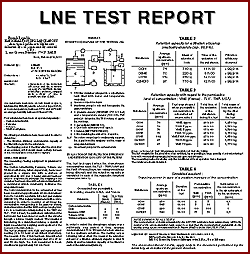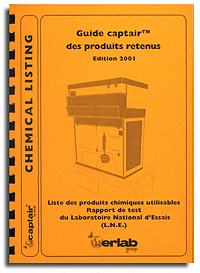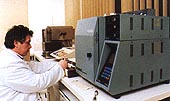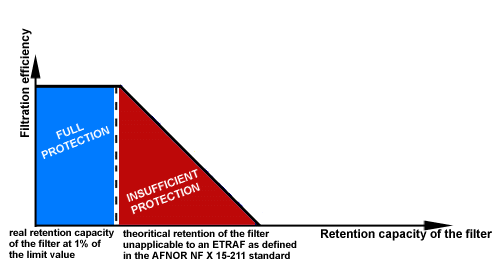 Is the
filtration system efficient ? Is the
filtration system efficient ?
THE FILTRATION
EFFICIENCY.
|
|
The filtration
efficiency deals with the capacity of a filter to retain the
toxics handled in the enclosure.
According to the most
demanding filtration standards (CSA Z316.5, ANSI/AIHA Z9.5,
and particularly the AFNOR NF X 15-211standard), the filter
must not release more than 1% of the permissible value of a
toxic within the air of a working area (this is to prevent the
accumulation of the release of unauthorized
toxics).
Furthermore, the manufacturer must produce
official test reports with hydrochloric acid, carbon
tetrachloride and toluene proving the filtration efficiency
and confirming the quantities of chemicals they certified to
be possibly retained on the appropriate filter in the Guide of
filtered products. For the totality of the chemicals mentioned
in the Chemical Listing, the manufacturer is commited to the
quantities of chemicals he certify to be handled in the
enclosure and retained on the appropriate filter, while
guaranteeing the same filtration efficiency. |
|
 |
 |
NATIONAL LABORATORY TEST
REPORT
The air
released by the filter contains 100 times less
pollutants than the acceptable limit values defined by
the official safety authorities. |
CAPTAIR "GUIDE OF FILTERED
PRODUCTS"
Erlab
created the Guide of filtered chemicals, which
analyses more than 600 chemicals. With the help of this
Chemical Listing, you will know the toxicity level of
the product handled, which filter has the best retention
for it and how to determine the filter saturation
detection method. |
|
 |
|
THE APPLIED TEST
LAB
If you want
to handle chemicals which are not mentioned in the Guide
of filtered chemicals the CAPTAIR applied test
laboratory will give you a full test report within 2
to 5 days concerning your handling and which filter is
the most appropriate for you. |
| |
 |
You can not rely on the retention
capacity of a filter expressed as a % of the weight of
the molecular filter.
Such quantities are purely theoritical : they
do not take into account the toxicity level of the
chemicals handled (TLV, MAK, OEL or VME) and allow such
an unrealistic filter saturation that the filtration
efficiency is reduced to
0%. | | |
|
|
|